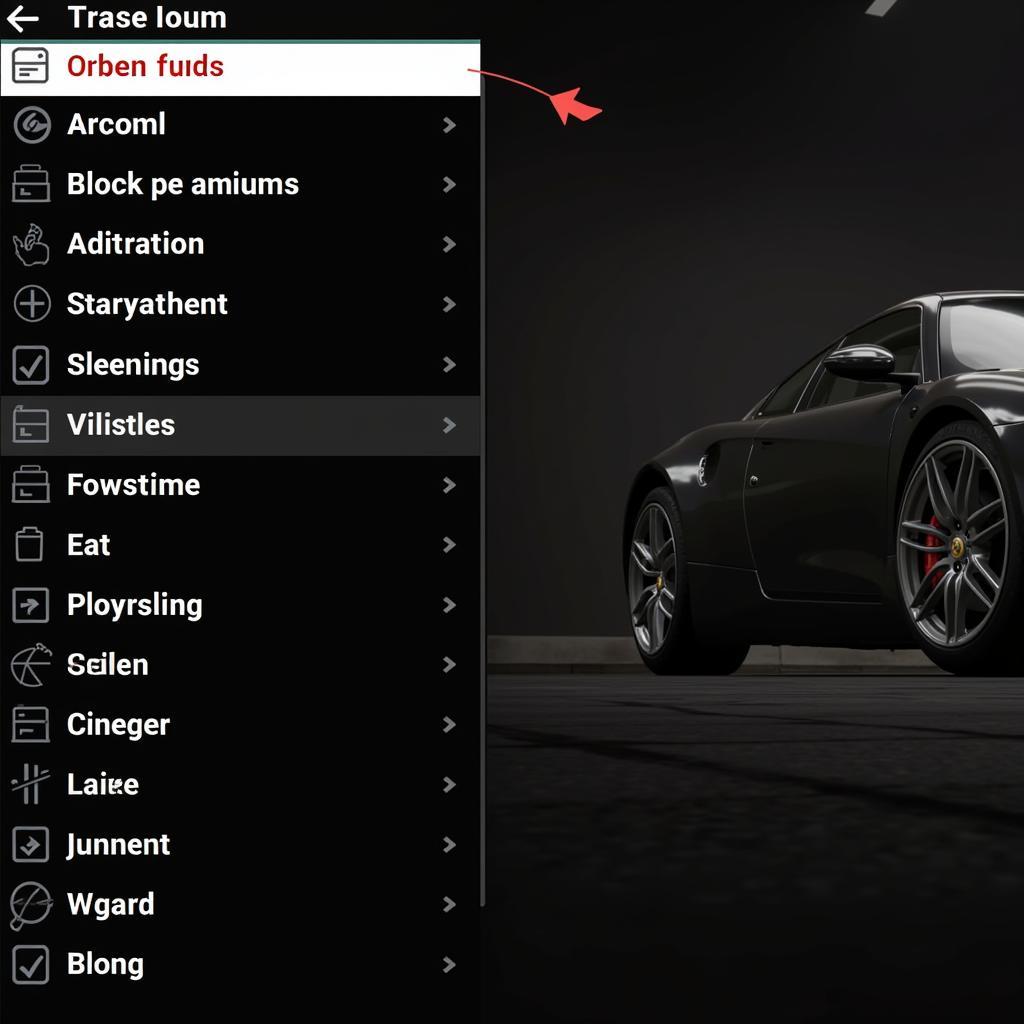Stripped car spark plugs can be a real headache, leading to misfires, reduced power, and even engine damage. This guide will walk you through diagnosing and fixing this common issue, empowering you to get your car back on the road. Let’s dive into how to tackle those pesky stripped spark plugs and get your engine running smoothly again. Fixing cracked plastic car interior can also be a hassle, check out this helpful guide: how to fix cracked plastic car interior.
Identifying a Stripped Spark Plug
A stripped spark plug occurs when the threads of the spark plug or the cylinder head are damaged, preventing a tight seal. This can be caused by over-tightening, cross-threading, or corrosion. Symptoms include:
- Engine misfires
- Rough idling
- Reduced power
- Decreased fuel efficiency
- Check engine light
What Causes Stripped Spark Plugs?
Several factors contribute to stripped spark plugs. Over-torquing is a primary culprit, applying excessive force during installation. Cross-threading, where the spark plug is inserted at an angle, can also damage the threads. Corrosion, often due to moisture or chemical exposure, weakens the metal and makes it more susceptible to stripping.
How to Fix a Stripped Spark Plug: A Step-by-Step Guide
Assessing the Damage
- Remove the spark plug wire: Carefully disconnect the wire by pulling on the boot, not the wire itself.
- Inspect the spark plug: Look for visible damage to the threads.
- Check the cylinder head: If the spark plug threads are intact, the cylinder head might be the issue.
Repairing the Threads (Minor Damage)
- Thread chaser: A thread chaser can help clean up minor damage to the threads.
- Spark plug repair kit: These kits often contain inserts or tools to repair damaged threads.
Repairing the Threads (Major Damage)
- Thread insert: A thread insert creates new, stronger threads in the cylinder head.
- Professional repair: For significant damage, consult a qualified mechanic. They might need to re-tap the cylinder head or even replace it.
Preventing Stripped Spark Plugs
- Use a torque wrench: This ensures the correct amount of torque is applied.
- Anti-seize lubricant: Apply a small amount to the spark plug threads to prevent seizing and corrosion.
- Proper installation technique: Insert the spark plug straight and avoid cross-threading.
“Always use a torque wrench when installing spark plugs. Over-tightening is a common cause of stripped threads,” advises John Miller, a seasoned automotive technician with over 20 years of experience.
Replacing the Spark Plug
Once the threads are repaired, install the new spark plug carefully. Apply anti-seize lubricant and tighten it to the manufacturer’s specified torque. Reconnect the spark plug wire.
“A little anti-seize goes a long way in preventing future issues with stripped spark plugs,” adds Miller.
Fixing a broken car window quickly can sometimes be necessary. For a helpful guide, see broken car window quick fix. If your car’s ceiling material needs attention, this might be helpful: how to fix car ceiling material. Looking to fix your vinyl car interior? Check this out: how to fix vinyl car interior.
Conclusion
Dealing with stripped car spark plugs can be frustrating, but with the right knowledge and tools, you can fix the problem and prevent it from happening again. By following the steps outlined in this guide, you can ensure your engine runs smoothly and efficiently. Remember, using a torque wrench and anti-seize lubricant is key to preventing future issues with stripped spark plugs. If you’re still struggling, don’t hesitate to reach out to us at AutoTipPro. You can call us at +1 (641) 206-8880 or visit our office at 500 N St Mary’s St, San Antonio, TX 78205, United States. We’re always here to help. You can also check out our helpful guide on fixing cracked plastic car interior: fixing cracked plastic car interior.





Leave a Reply